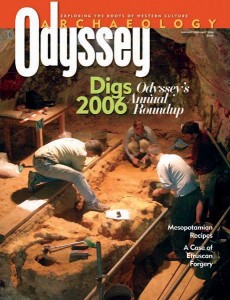Past Perfect: Finding Akhenaten’s Daughter
The British author Mary Chubb uncovers an ancient Egyptian statue

Mary Chubb (1903–2003) attended art school and taught Latin before joining London’s Egypt Exploration Society as a secretary. In the 1930s she participated in the society’s dig at Tell el-Amarna, Egypt, where the “heretic” pharaoh Akhenaten (1353–1336 B.C.) established a short-lived capital called Akhetaten. Chubb had the good fortune to unearth an exquisite 2-inch-high head, which dig director John Pendlebury identified as a likeness of Ankhesenpaaten, one of Akhenaten’s daughters and the wife of Pharaoh Tutankhamun (1332–1322 B.C.). Chubb’s 1954 book Nefertiti Lived Here recounts her experiences on the Amarna dig; the excerpt on the following pages tells of her thrill in discovering Ankhesenpaaten’s face amid “the yielding rubble.” In later years, Chubb described her experiences excavating the Mesopotamian city of Eshnunna, and she wrote a series of children’s books about ancient Rome, Greece, Egypt and the Holy Land. In her obituary, the Times of London praised Chubb’s gift for combining “scholarship and fun, the personal and the intelligently treated distance.”
Already a library member? Log in here.
Institution user? Log in with your IP address.

